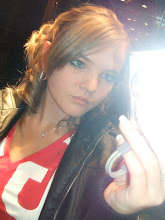
'For Marina' Photographed by Max Billder
This is just a beautiful image, that was captured just at the right time. The image was shot on a wide angle setting, I like how the the two birds at situated in the centre of the frame, with blackness surrounding the outer edges of the image. This is very creative and works well with the concept.
The colors work incredibly well, the red connotates love and passion, which also ties in with the heart shape, that the birds are creating with their heads. Each individual color stands out in the image, as the background is in blackness. This photograph has been taken with such care and detail that it looks like a painting.
I like how the image is framed, the two birds are placed in the middle as they are the main focus of the picture. The heart shaped that they are crating with their heads, is placed in the middle at the top, which dominates the rest of the image.

 Posted by
Posted by



















